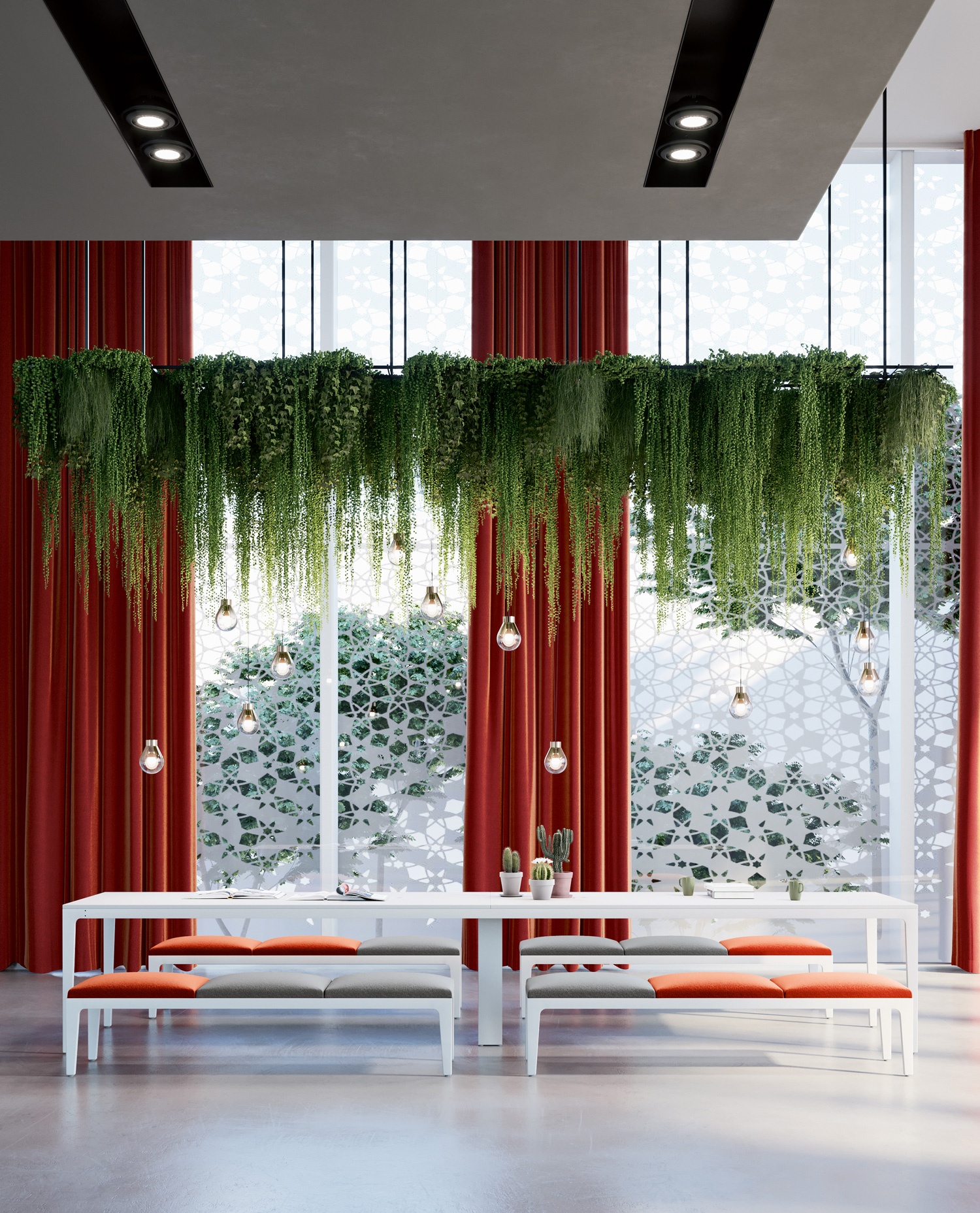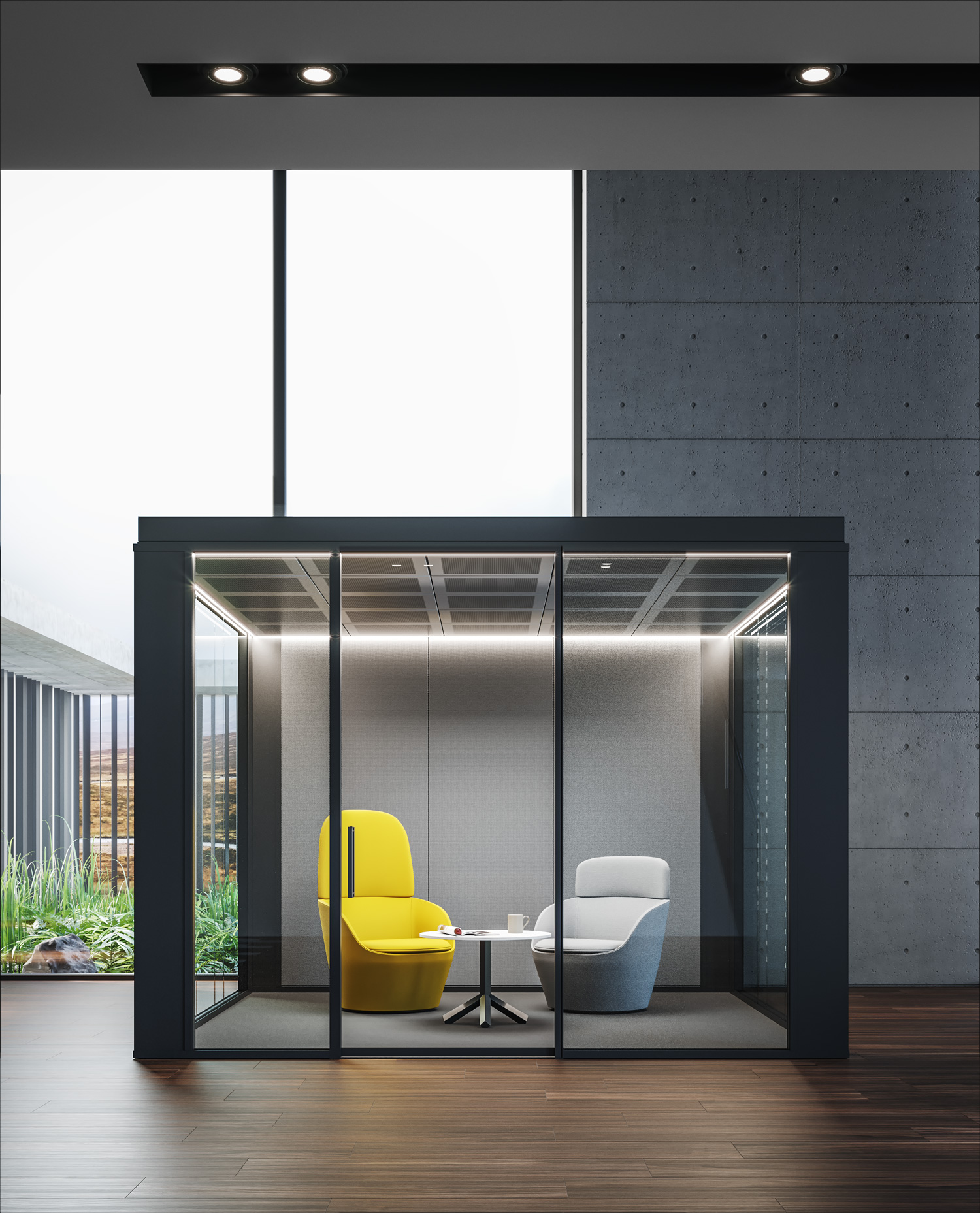The 2020 office is “agile”, green, and very much focused on the wellbeing of its occupants. This is how the new trends are primed to take over our workspaces and brighten up the work day with home-like comforts.

Alplus, design Marco Zito
Wellness and Biophilic design
There has been talk of biophilic design for decades, but now we’re seeing its concepts being incorporated more and more into actual projects, even in the office domain. The line between indoors and out is increasingly blurred, thanks to the use of extensive glazing, colours reminiscent of nature (greens and browns, front and centre), paintings and prints depicting bucolic scenes and – as you would expect – live plants.
The reason is a bit of a no-brainer: the characteristics of man’s natural habitat make it the logical next step in the “green” design movement. There are more and more studies every year attesting to the benefits of working in places decked out with greenery and other nature-inspired elements. Reduced stress, relief from mental fatigue, and calm in our dealings with others are just a few examples.
According to the British university of Exeter, these advantages could translate into an increase in productivity as high as 15 percent. No longer a luxury enjoyed by a lucky few, bringing nature into the office is now a bona fide business investment because it energizes the people using the space. With the added bonus of a special focus on wellbeing.
In 2020, we’ll see a surge in ultra-comfortable seating, sit-stand desks that encourage workers to move more, and even sleeping pods: soft cubicles for grabbing a quick lie-down between one meeting and the next.

A bit of privacy, please.
Web companies playing fast and loose with personal data, and increasingly omnipresent social networks: these factors – which have become something of a leitmotif of our modern age – may well be triggering the desire for more privacy that is also spreading in the office. The latest US Workplace Survey, by Gensler attests to people’s growing impatience with crowded open-plan spaces. Resolutions for 2020? Complement shared spaces with the occasional oasis of peace. And “break up” larger spaces with privacy screens – made from glass, so as to still let in light – or partition walls, to organize the space with a focus on agility and modularity.
Multifunctional? No, dynamically flexible.
On the subject of modularity, if you haven’t heard about dynamic flexibility yet, make a mental note of the expression, which may well be the watchword of one of the biggest trends in office design.
Taking the concept of “multifunctional space” one step further, dynamic flexibility exploits a new generation of mobile, lightweight and ergonomically designed elements to quickly repurpose spaces to meet any current need. With help from sliding walls, lightweight furniture and adjustable smart lighting, a desk space is converted into a meeting room, a living room becomes a home office, and a workspace is now a chill-out zone.
At the office-cum-café.
Smart working is another global trend that’s become firmly entrenched far and wide: the number of Italian businesses who offer (or who will soon be offering) a form of agile working has now topped 56%, as attested by the Polytechnic of Milan’s Osservatorio research unit. In northern European countries, the percentage is higher still: by 2011, Finland was already offering this opportunity in 92% of cases. In the States, where smart working is steadily growing, an incredible 4.3 million people work from home for at least half of the week.
The 2020 office is thus under pressure to offer solutions to an army of workers who float between the company and home office. So home becomes the office – incorporating technologies and flexible workstations – and the office becomes home: with the introduction of fridges and play spaces, chill-out zones, and even fitness areas and work cafés.
In a few years’ time, we may well be saying goodbye to the “good old-fashioned” office. And nothing would make us happier.

